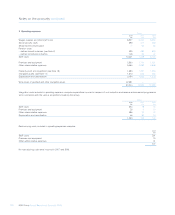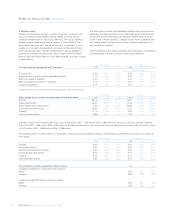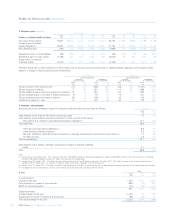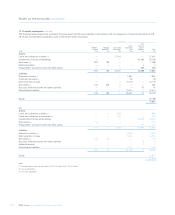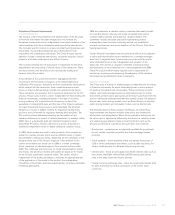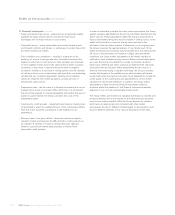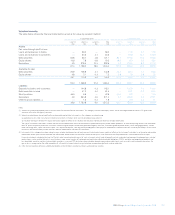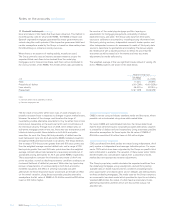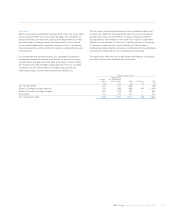RBS 2008 Annual Report Download - page 201
Download and view the complete annual report
Please find page 201 of the 2008 RBS annual report below. You can navigate through the pages in the report by either clicking on the pages listed below, or by using the keyword search tool below to find specific information within the annual report.
Notes on the accounts continued
RBS Group Annual Report and Accounts 2008200
11 Financial instruments (continued)
•Equity and equity index prices – quoted prices are generally readily
available for equity shares listed on the world’s major stock
exchanges and for major indices on such shares.
•Commodity prices – many commodities are actively traded in spot
and forward contracts and futures on exchanges in London, New York
and other commercial centres.
•Price volatilities and correlations – volatility is a measure of the
tendency of a price to change with time. Correlation measures the
degree to which two or more prices or other variables are observed
to move together. If they move in the same direction there is positive
correlation; if they move in opposite directions there is negative
correlation. Volatility is a key input in valuing options and the valuation
of certain products such as derivatives with more than one underlying
variable that are correlation-dependent. Volatility and correlation
values are obtained from broker quotations, pricing services or
derived from option prices.
•Prepayment rates – the fair value of a financial instrument that can be
prepaid by the issuer or borrower differs from that of an instrument
that cannot be prepaid. In valuing prepayable instruments that are not
quoted in active markets, the Group considers the value of the
prepayment option.
•Counterparty credit spreads – adjustments are made to market prices
(or parameters) when the creditworthiness of the counterparty differs
from that of the assumed counterparty in the market price (or
parameters).
•Recovery rates / loss given default - these are used as an input to
valuation models and reserves for ABS and other credit products as
an indicator of severity of losses on default. Recovery rates are
primarily sourced from market data providers or inferred from
observable credit spreads.
In order to determine a reliable fair value, where appropriate, the Group
applies valuation adjustments to the pricing information derived from the
above sources. These adjustments reflect the Group’s assessment of
factors that market participants would consider in setting a price, to the
extent that these factors have not already been included in the
information from the above sources. Furthermore, on an ongoing basis,
the Group assesses the appropriateness of any model used. To the
extent that the price provided by internal models does not represent the
fair value of the instrument, for instance in highly stressed market
conditions, the Group makes adjustments to the model valuation to
calibrate to other available pricing sources. Where unobservable inputs
are used, the Group may determine a range of possible valuations
based upon differing and stress scenarios to determine the sensitivity
associated with the valuation. When establishing the fair value of a
financial instrument using a valuation technique, the Group considers
certain adjustments to the modelled price which market participants
would make when pricing that instrument. Such adjustments include the
credit quality of the counterparty and adjustments to correct model
valuations for any known limitations. In addition, the Group makes
adjustments to defer income for financial instruments valued at
inception where the valuation of that financial instrument materially
depends on one or more unobservable model inputs.
The Group refines and modifies its valuation techniques as markets and
products develop and as the pricing for individual products becomes
more or less readily available. While the Group believes its valuation
techniques are appropriate and consistent with other market
participants, the use of different methodologies or assumptions could
result in different estimates of fair value at the balance sheet date.


